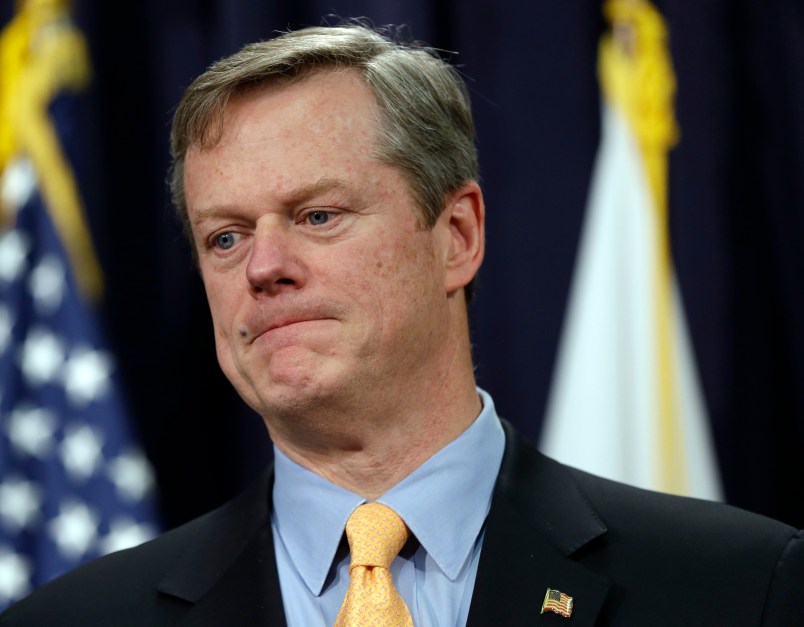Political scientists, public opinion analysts and pundits often make two erroneous assumptions about American politics: the first is that there is an ironclad division between red states and blue states; the second is that on the Republican side, the division is based on voters’ racism, nativism or some other “ism” – that is, on irrational prejudice that blinds these voters to their own real interests.
1. Let’s look at West Virginia and Louisiana – two states that are counted now as “red” and whose support for Republicans is often attributed to racism or (in the case of West Virginia) sexism. Both states were once seen as Democratic strongholds. Between 1932 and 1996, West Virginia voted for a Democratic presidential candidate in 13 of 16 elections. Louisiana was less dependably Democrat, but did vote for Bill Clinton in 1992 and 1996. But since 2000, both states have supported Republicans for president, and probably will this year, Does that make them ineradicably red?
It turns out both states now have Democratic governors, and that in this year’s governor’s race in West Virginia, Democrat Jim Justice is well ahead of Republican Bill Cole. How is the possible in a state that has Donald Trump winning by 57 to 30 percent over Hillary Clinton? There’s an obvious answer: coal and jobs. West Virginia’s economy is still tied to coal and natural gas – even if far less so than fifty years ago – and the dependence on extractive industries – and the other jobs they create – is particularly strong among the state’s rural and small town voters who used to automatically back Democrats.
West Virginia’s embrace of Republican presidential candidates began with Al Gore, whose signature issue was global warming and who was in favor of weaning the economy off of coal. The national party and its candidates, including Hillary Clinton, have not wavered from that stand. By contrast, Justice is a coal industry billionaire whose campaign is partly based on protecting the state’s coal industry. More broadly, Justice, who is also credited with saving the Greenbrier Resort, has focused his campaign on bringing economic growth to the state. He has rejected Republican budget cutting. Here is his signature appeal:
Our state is dying. We have a massive budget deficit. We cannot cut our way to prosperity. We cannot continue to be the world’s best-kept secret and starve. You need a governor that can market us to the world. I can! We have to grow revenue through job creation. We must pay our people better, fix our schools, repair our roads, and give our families hope.
Democrats can argue, as Clinton has, that it is in state’s long-term interest to wean itself off of coal – and that’s probably true in my opinion – but that’s an argument about economic interest, not about racism or sexism. The same kind of considerations prevail in Louisiana, which is dependent on the petrochemical industry, or in Kentucky’s coal country. If Democrats want to win these states in national elections, they will have to put forth a compelling economic plan for their growth that doesn’t involve increasing carbon emissions. I don’t think Democrats have one.
2. Let’s now look at two dependably blue states, Massachusetts and my own state of Maryland. Both states, lo and behold, have extremely popular Republican governors. In current polling, Massachusetts’ Charlie Baker is the country’s most popular governor with a 72 percent approval rating, and Maryland’s Larry Hogan is second with 71 percent. Both men are conventional business Republicans on taxes and private industry, but they are also not draconian budget cutters and have steered away from social issues. Baker signed a bill for transgender rights that was the state Democrats’ priority. Hogan, criticized by African-American lawmakers, for funding prisons in Baltimore rather than school construction at historically black colleges, responded by shifting the funding to the colleges. In polling, Hogan enjoys 57 percent approval from the state’s African-Americans. Neither man is supporting Trump for president.
Baker’s and Hogan’s success shows, in my opinion, that when Republicans are able to move to the center – without abandoning their business allies, and even while occasionally infuriating unions and other Democratic constituencies – they can win elections in even reputedly blue states. In this year’s presidential election, I have long believed that a ticket of Ohio Governor John Kasich and Florida Senator Marco Rubio would have had a very very good chance of winning against Hillary Clinton. The moral of this story: don’t believe what the pundits and political scientists are saying about red and blue states and about Democratic or Republican voters. The situation is more fluid than they portray it; and voters are not as dumb or bigoted as some political experts think they are.






